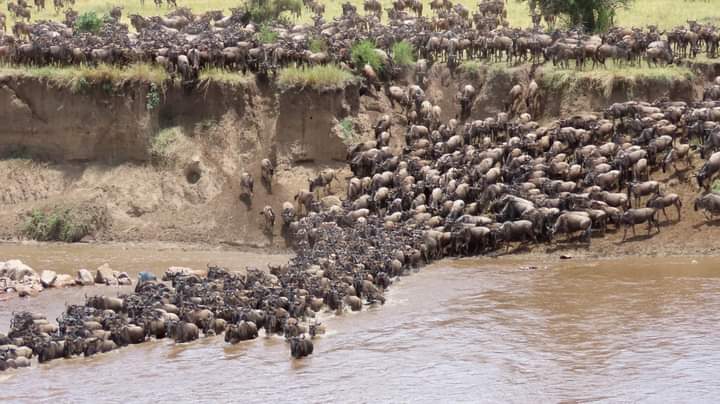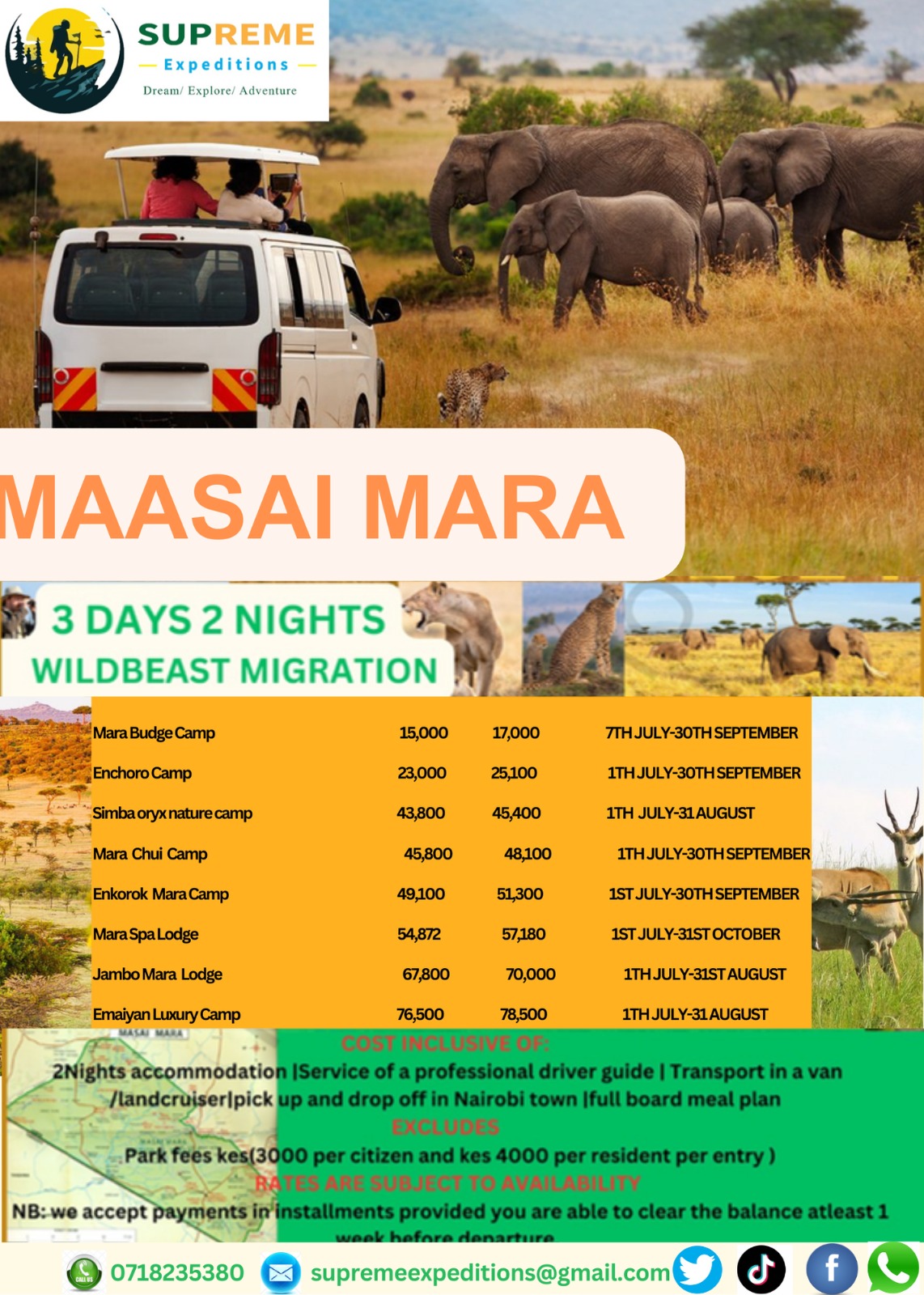Nestled in the southwest corner of Kenya, the Maasai Mara is a world-renowned reserve, known for its breathtaking landscapes, rich wildlife, and strong cultural heritage. A part of the larger Serengeti ecosystem, the Maasai Mara offers visitors an unparalleled safari experience, with opportunities to witness dramatic wildlife encounters, and immerse in the traditions of the indigenous Maasai people. Whether you’re an avid nature enthusiast or a cultural explorer, the Maasai Mara is a destination that promises unforgettable experiences.
The Maasai Mara National Reserve: An Overview
Covering approximately 1,510 square kilometers, the Maasai Mara National Reserve is a protected area in the Great Rift Valley of Kenya. It was named after the Maasai people, the traditional inhabitants of the region, and the Mara River, which runs through the reserve. The Maasai Mara shares its southern boundary with Tanzania’s Serengeti National Park, creating a contiguous wildlife habitat that extends across national borders.
The reserve’s diverse ecosystems, ranging from open savannas and acacia woodlands to riverine forests and wetlands, make it an incredibly biodiverse region. It is home to an astonishing variety of wildlife, including the “Big Five” (lion, elephant, buffalo, leopard, and rhinoceros), along with numerous other species such as cheetahs, giraffes, zebras, wildebeests, and over 450 species of birds.
The Great Migration: A Natural Wonder
One of the main attractions of Maasai Mara is the Great Migration, one of the most spectacular natural events on the planet. Every year, over two million wildebeests, zebras, and gazelles migrate from the Serengeti in Tanzania to the Maasai Mara in search of greener pastures. This massive migration typically occurs between July and October, with the animals crossing the Mara River, where dramatic encounters with crocodiles and predators unfold.

The Great Migration is not just a visual spectacle but also a demonstration of nature’s cycles and the resilience of these herbivores. Witnessing the migration offers safari-goers an unforgettable experience, as they watch the herds make their perilous journey across the plains, often pursued by predators on the hunt.
Wildlife in Maasai Mara: A Photographer’s Paradise
Maasai Mara is often called a “photographer’s paradise” due to its extraordinary wildlife viewing opportunities. The reserve’s relatively flat terrain and open savanna provide unobstructed views, making it ideal for spotting wildlife from a distance. The variety of landscapes — from golden grasslands to forested riverbanks — further enhances the visual appeal of the Mara.
Beyond the Big Five, Maasai Mara is home to countless other species, including the endangered cheetah, the elusive leopard, hyenas, and vast herds of wildebeest and zebra. Birdwatchers can enjoy spotting species such as the lilac-breasted roller, secretary bird, and ostrich. Photographers have the chance to capture thrilling predator-prey interactions, such as lions hunting or cheetahs sprinting after gazelles.
Cultural Heritage: The Maasai People
The Maasai Mara is not just known for its wildlife, but also for the rich culture of the Maasai people. The Maasai are semi-nomadic pastoralists, whose way of life has remained largely unchanged for centuries. The Maasai Mara is a key part of their ancestral land, and visitors have the unique opportunity to engage with the community, learn about their customs, and understand their deep connection with the land and animals.
Maasai villages, known as enkangs, offer cultural visits where travelers can see traditional dances, experience rituals, and learn about the Maasai’s age-old traditions, such as their distinctive beadwork, clothing (shukas), and their fascinating belief systems. The Maasai are deeply intertwined with the wildlife in the region, and their traditional practices have played a role in conserving the Mara ecosystem.
Safari Activities: The Ultimate Adventure
There is no shortage of activities for nature lovers and adventure seekers in Maasai Mara. Visitors can explore the reserve by vehicle on game drives, which are available during both the day and night. Morning and evening game drives are particularly popular as they offer the best chance of encountering wildlife in their most active states.
Hot air balloon safaris are another popular way to experience the Maasai Mara from a unique perspective. Floating above the plains at sunrise, passengers are treated to a bird’s-eye view of the reserve, as herds of animals roam below. After landing, guests are often treated to a champagne breakfast in the wild.
For those seeking a more intimate wildlife experience, walking safaris led by trained Maasai guides offer a deeper understanding of the landscape, plants, and small animals often missed from the vehicle.
Conservation Efforts: Preserving the Mara
Over the years, the Maasai Mara has faced challenges related to human-wildlife conflict, poaching, and encroachment on traditional lands. To address these issues, several conservation efforts have been implemented, such as anti-poaching patrols, community-based conservation initiatives, and wildlife corridors to ensure that animals can move safely between the Mara and Serengeti ecosystems.
Partnerships between conservation organizations and local Maasai communities have been essential in preserving the reserve’s biodiversity. The creation of conservancies around the Mara Reserve, such as the Mara North Conservancy, has helped to reduce pressure on the land, provide benefits to local people, and ensure sustainable tourism practices.
Best Time to Visit
While Maasai Mara is a year-round destination, the best time to visit largely depends on the visitor’s interests. The dry season, from June to October, is ideal for game viewing, as animals congregate around water sources. This period coincides with the Great Migration, making it the most popular time to visit.
For those seeking a quieter experience, the wet season (November to May) can also offer rewarding safari experiences, with lush landscapes and fewer tourists. During this time, some areas of the reserve may be less accessible due to rain, but birdwatching is at its peak as migratory species arrive.
Maasai Mara is a magical destination that offers an exciting blend of wildlife, adventure, and cultural discovery. Whether you’re watching the Great Migration unfold, capturing stunning photographs of wild animals, or connecting with the Maasai people, the reserve leaves a lasting impression on all who visit. With its breathtaking scenery, incredible biodiversity, and commitment to conservation, Maasai Mara is truly one of Africa’s most iconic safari destinations.
View Our Maasai Mara packages:

